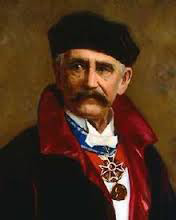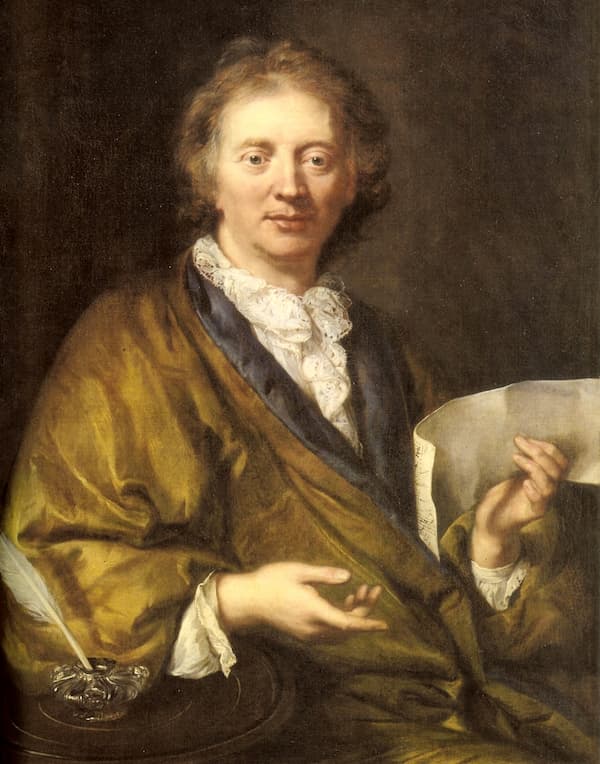 As far as composers go, Franz Xaver Scharwenka (1850-1924) is not necessarily a household name. Born in a small Polish town he took first piano lessons at the age of 3, and when his family moved to Berlin he became a student at the Theodor Kullak Academy. He soon toured Europe, and eventually the United States as a conductor and soloist, and his Chopin interpretations were praised for the beauty of its tone. And Vienna’s famed music critic Eduard Hanslick called Scharwenka “a wholly outstanding pianist, dazzling but without charlatanry.” He opened his own Music Academy in Berlin in 1881, and a New York City branch opened a decade later. His most famous compositions were innocent little piano pieces that literally sold millions of copies and were endlessly reprinted in popular piano music anthologies. Lacking business savvy, Scharwenka sold his miniatures for a flat fee when he could have made massive royalties around the world.
As far as composers go, Franz Xaver Scharwenka (1850-1924) is not necessarily a household name. Born in a small Polish town he took first piano lessons at the age of 3, and when his family moved to Berlin he became a student at the Theodor Kullak Academy. He soon toured Europe, and eventually the United States as a conductor and soloist, and his Chopin interpretations were praised for the beauty of its tone. And Vienna’s famed music critic Eduard Hanslick called Scharwenka “a wholly outstanding pianist, dazzling but without charlatanry.” He opened his own Music Academy in Berlin in 1881, and a New York City branch opened a decade later. His most famous compositions were innocent little piano pieces that literally sold millions of copies and were endlessly reprinted in popular piano music anthologies. Lacking business savvy, Scharwenka sold his miniatures for a flat fee when he could have made massive royalties around the world.
Franz Xaver Scharwenka: Piano Concerto No. 1, Op. 32
His first piano concerto started as a fantasy for solo piano in 1870. Unsatisfied, he added an orchestral introduction and presented the work as a single-movement fantasy in Berlin in 1875. Still not entirely satisfied, he reshaped the work as a concerto and dedicated the work to Franz Liszt, for whom he performed it privately. Unfolding in three movements, the concerto nevertheless reflects its rather unusual genesis. It has no dedicated slow movement, but merely an adagio intermezzo as part of the opening movement. As such, it might be the only concerto in existence that features 3 consecutive Allegro movements. And it became a hit! Hans von Bülow described it “original, amiable throughout, perfect in form with admirable instrumentation.” And exceptional pianists like Constantin von Sternberg, Emil von Sauer, Moriz Rosenthal and Eugen d’Albert performed the Scharwenka concerto to great acclaim. Yet as it frequently happens, the work completely disappeared from the concert stage until Earl Wild and the Boston Symphony first recorded it in 1968.
You May Also Like
- Unsung Concertos
Joachim Raff: Cello Concerto No. 1, Op. 193 Today, the German-Swiss composer Joachim Raff (1822-1882) is primarily remembered as an assistant to Franz Liszt in Weimar. - Unsung Concertos
Ernst Sachse: Concerto in F Major for Bass Trombone The modern era of the trombone as a solo instrument began on 6 April 1815, when Friedrich August Belcke performed a potpourri with obbligato trombone by Carl Heinrich Meyer with the Gewandhaus orchestra in Leipzig. - Unsung Concertos
Julius Klengel: Concerto for 2 Cellos, Op. 45 He was frequently compared to Paganini, and in central European cello circles, Julius Klengel (1859-1933) was even called an institution. - Unsung Concertos
Bohuslav Martinů: Oboe Concerto H.353 Ceaselessly working to “express the never-ending search for truth and the meaning of life,” Martinů composed in a variety of colorful styles and fluid forms.
More Anecdotes
-
 The Colours of Love: Couperin’s Dominos The secret language of colors at French royal balls
The Colours of Love: Couperin’s Dominos The secret language of colors at French royal balls - The Devil is a Woman
Eugene Aynsley Goossens and Rosaleen Norton From police raids to passionate letters, learn about the Goossens-Norton scandal - Day and Night with Rachmaninoff
A Close Look at His Symphonic Dances An epic battle between life and death -
 Haydn’s “Ox Minuet” A butcher, his daughter's wedding, and a composer's unexpected reward
Haydn’s “Ox Minuet” A butcher, his daughter's wedding, and a composer's unexpected reward


